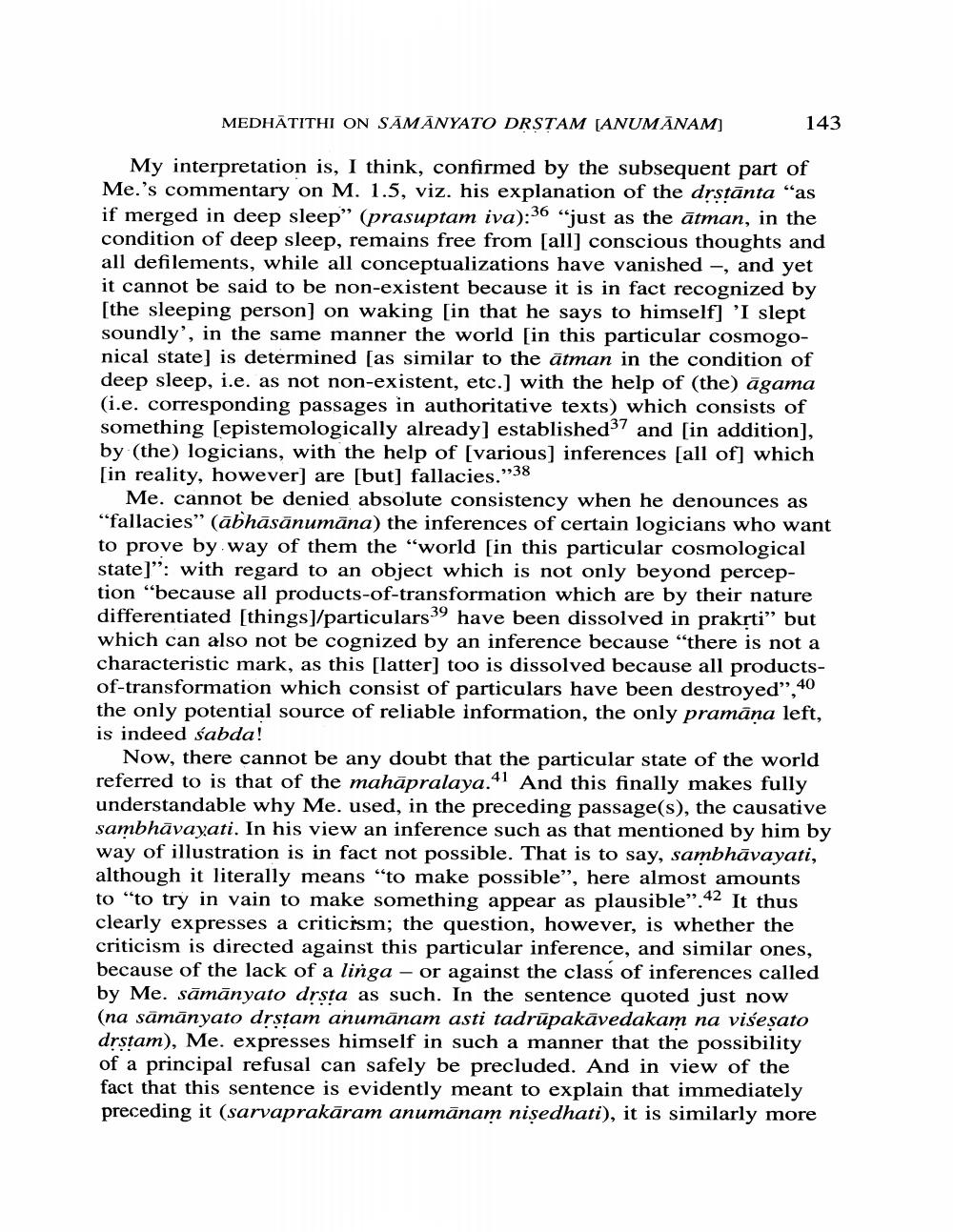Book Title: Medhatithi On Samanyato Drstam Author(s): Albrecht Wezler Publisher: Albrecht Wezler View full book textPage 5
________________ MEDHATITHI ON SAMANYATO DRSTAM (ANUMĀNAM] 143 My interpretation is, I think, confirmed by the subsequent part of Me.'s commentary on M. 1.5, viz. his explanation of the drstānta “as if merged in deep sleep" (prasuptam iva):36 "just as the ātman, in the condition of deep sleep, remains free from [all] conscious thoughts and all defilements, while all conceptualizations have vanished -, and yet it cannot be said to be non-existent because it is in fact recognized by [the sleeping person) on waking [in that he says to himself] 'I slept soundly', in the same manner the world [in this particular cosmogonical state] is determined [as similar to the ätman in the condition of deep sleep, i.e. as not non-existent, etc.) with the help of (the) āgama (i.e. corresponding passages in authoritative texts) which consists of something (epistemologically already] established37 and [in addition), by (the) logicians, with the help of (various] inferences [all of] which [in reality, however) are [butfallacies."38 Me. cannot be denied absolute consistency when he denounces as “fallacies” (ābhāsānumāna) the inferences of certain logicians who want to prove by way of them the "world [in this particular cosmological state)": with regard to an object which is not only beyond perception "because all products-of-transformation which are by their nature differentiated [things]/particulars 39 have been dissolved in prakrti” but which can also not be cognized by an inference because there is not a characteristic mark, as this [latter] too is dissolved because all productsof-transformation which consist of particulars have been destroyed”, 40 the only potential source of reliable information, the only pramāna left, is indeed sabda! Now, there cannot be any doubt that the particular state of the world referred to is that of the mahāpralaya.41 And this finally makes fully understandable why Me. used, in the preceding passage(s), the causative sambhāvayati. In his view an inference such as that mentioned by him by way of illustration is in fact not possible. That is to say, sambhāvayati, although it literally means “to make possible", here almost amounts to "to try in vain to make something appear as plausible”.42 It thus clearly expresses a criticism; the question, however, is whether the criticism is directed against this particular inference, and similar ones, because of the lack of a linga - or against the class of inferences called by Me. sāmānyato drsta as such. In the sentence quoted just now (na sämänyato drstam anumānam asti tadrupakāvedakam na višeșato drstam), Me. expresses himself in such a manner that the possibility of a principal refusal can safely be precluded. And in view of the fact that this sentence is evidently meant to explain that immediately preceding it (sarvaprakāram anumānam niședhati), it is similarly morePage Navigation
1 ... 3 4 5 6 7 8 9 10 11 12 13 14 15 16 17 18 19
